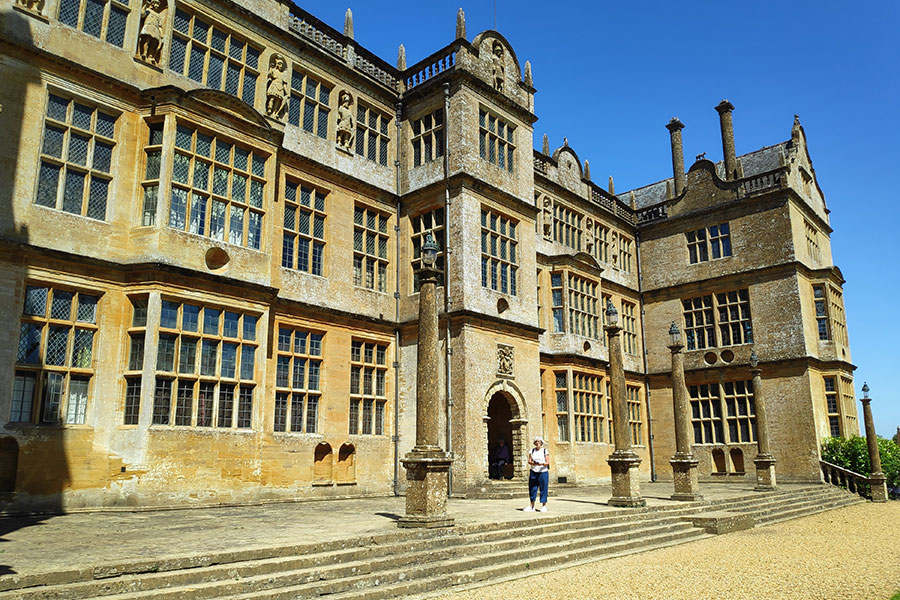Roger Bray has a peaceful stay at the Rose & Crown in Trent
Archbishop Geoffrey Fisher, towards the end of a life that had seen him officiate at Princess Elizabeth’s wedding and later crown her Queen, settled with his wife in the bucolic Dorset village of Trent. Though it was claimed the Primate of all England had trouble getting the job out of his system, it must have been a soothing diminuendo after the pomp, circumstance and politics of high office. At nightfall on the sort of warm summer evening you associate with noisy youths letting off steam in Renaissance piazzas, the place was silent but for the noise of an occasional passing car. No hint of television dialogue leaked from its houses, no music, scarcely a light to betray occupancy. Even the sounds of the busy Rose & Crown became inaudible after a few minutes on foot. We strolled from the pub after dinner, past St Andrew’s church and the graveyard where Geoffrey Fisher was buried, past the 16th century Dairy house, where the eye was drawn to the tracery of an original window its north west wall, past the pretty 19th century almshouses and the Manor House, set back from the lane, where the Wyndham family risked hiding Charles II as he fled to France after defeat by Cromwell at the Battle of Worcester. A short distance further was an intriguing raised stone pavement – protection perhaps for crinoline hems from the by product of the first horse powered economy.
In 1935 the 2100 acre Trent Estate was acquired by Ernest Cook, grandson of the travel pioneer. It was added to the portfolio of the Trust that bears his name in 1961. Besides the pub, the Trust owns 36 cottages and houses, many thatched.
Encouraged by a forecast of hot sunshine – and on a whim – we had booked a break at the Rose & Crown after trawling the Stay in a Pub website* (https://stayinapub.co.uk). It has only three bedrooms, all at ground level and accessible to, though separated from, customers at tables in its gorgeous garden. The view from both garden and room was exceptional: a sweep of gently rolling fields and hills with only a small glimpse of urban buildings to remind us we were only about four miles either way from Sherborne, with its magnificently fan vaulted abbey, and Yeovil, just across the county border in Somerset.
It’s a fine base for walking. We drove for a half hour or so to Mintern Magna and climbed to a ridge track towards lovely Cerne Abbas but one path I had hoped to follow proved impossibly overgrown – perhaps because of pandemic pressures – and the subsequent, tiring diversion forced a major change in a carefully planned route. Pints of beautifully kept Butcombe bitter at the Giant Inn in Cerne, and a picnic with a head on view of the eponymous naked figure, sculpted in the chalk of a nearby hillside, revived our spirits for a shortened hike along quiet country lanes and well marked trails, back to our starting point.
The pub is also a short distance from the National Trust’s Montacute House, built between 1590 and 1601 by Edward Phelips, a wealthy lawyer who opened the prosecution case against Guy Fawkes and his fellow Gunpowder plotters. Built of a local stone that seems radiant in sunshine it also once owned by Ernest Cook, who rescued it from dereliction. Not long before that it had been bought by Lord Curzon, former Viceroy of India and a man not universally loved in high places. He was summoned from there in 1923 by the King’s Private Secretary and rushed to London on the assumption he would be made Prime Minister – but was passed over in favour of Stanley Baldwin. The world had changed. It was no longer acceptable that the position should be held be a member of the unelected chamber. Curzon burst into tears. The story acquired added piquancy amid the grandeur of the house and the portraits of those in its heyday– by Gainsborough and SirJoshua Reynolds among others – of those made wealthy through ennoblement or inheritance.

It’s often the complete surprises that make a trip most memorable, however. The 13th century Parish Church of St Andrew stands out, not just for its association with Geoffrey Fisher, but for a clutch of fascinations. To mention a few, there are the delicate rood screen made by Glastonbury monks in the 15th century, and pre-reformation pews with their carved ends. There is the arch with “looking-glass” writing – a message running from right to left: “All flesh is grass and the glory of it is as the flovre of the fieldes”. This was supposedly to remind young women, peering into their mirrors during sermons, of their vanity. And in the porch, a sign requesting worshippers “to take off pattens and Clogs before entering the Church”. The Archbishop served there as an honorary assistant priest. He was said to have plagued his successor with sometimes thorny criticisms. But in such an environment as this it is hard to imagine him staying tetchy for very long.

*The total bill for two spending two nights in a spacious room, with two armchairs from which to read and take in the view, including breakfasts, dinners and drinks, was £393.
Find out more about the Rose & Crown, Trent













